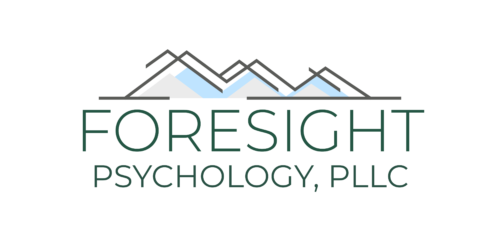Dyslexia tutors can help remove barriers, point out needed accommodations, and help students reach their potential. This post covers our services designed to help with this specific learning difference, concluding with a fictitious example of a reading tutor for dyslexia and online tutoring for dyslexia. Given that this learning difference is so widespread, dyslexia tutoring is a core service.
If you have any questions about dyslexia tutoring or Therapeutic Tutoring in general, please feel free to contact us or schedule a consultation.
Background Information
Dyslexia is a specific learning disability that affects a person’s ability to read, spell, write, and sometimes speak. It is a neurological condition that does not affect intelligence but makes it difficult for the brain to process written language. In other words, people with this learning difference have the same ability and potential as everyone else. People with dyslexia may have trouble recognizing words, decoding letter sounds, and understanding the relationship between letters and sounds. With proper interventions and accommodations, this learning difference does not have to limit possibilities and potential! We aim to be a large part of the solution with in-person and online tutoring for dyslexia.
How Dyslexia Affects Learning:
- Reading Challenges – Difficulty with decoding words, reading fluency, and comprehension.
- Spelling Issues – Struggles with remembering how words are spelled, even after repeated exposure.
- Writing Difficulties – Trouble organizing thoughts on paper, frequent letter reversals, and difficulty with grammar.
- Slow Processing Speed – It takes longer to process and respond to written or verbal information.
- Difficulty with Phonemic Awareness – Struggles to hear, identify, and manipulate sounds in words, making learning phonics harder.
- Memory Issues – Challenges with remembering instructions, sequences, and new vocabulary.
- Impact on Math (Dyscalculia) – Some individuals also struggle with number sense, remembering math facts, or word problems.
- Low Confidence & Anxiety – Frustration with reading and writing tasks can lead to self-esteem issues or school-related anxiety.
Accommodations & Support:
- Services like ours – see the next section!
- Accommodations such as extra time on tests and assignments
- Technology such as audiobooks, text-to-speech tools, speech-to-text software for writing
- Self-help interventions, such as breaking down instructions into smaller steps
- Whole classroom strategies such as phonics-based or multisensory learning approaches
This learning difference varies in severity, and with the right support, individuals can develop effective strategies to succeed in school and beyond.
What Dyslexia Tutors Do
We provide specialized instruction tailored to students with this learning difference, helping them improve their reading, writing, spelling, and comprehension skills. Their role goes beyond traditional services, using structured, multi-sensory, and evidence-based methods to support learning.
1. Dyslexia Tutoring Start with an Assessment
- Dyslexia tutors identify strengths and weaknesses in reading, spelling, and writing.
- They review past evaluations (e.g., IEPs, psychoeducational assessments).
- Then, they set personalized learning goals based on student needs.
- We can also help with dyslexia testing, another branch of Foresight Psychology.
2. Dyslexia Tutoring Uses Structured Approaches
Our dyslexia tutors follow research-backed programs like:
- Orton-Gillingham (OG) – A multi-sensory, sequential approach to reading and spelling.
- Wilson Reading System – A step-by-step phonics-based reading program.
- Barton Reading & Spelling System – A highly structured intervention.
3. Teach Phonemic Awareness and Decoding Skills
- Our dyslexia tutors help students recognize and manipulate sounds in words.
- They focus on letter-sound relationships, blending, and syllable division.
- They use hands-on tools like letter tiles, flashcards, and tracing exercises.
4. Improve Reading Fluency and Comprehension
- Our dyslexia tutors guide students through repeated reading and assisted reading exercises.
- They teach visualization techniques to improve understanding.
- They use graphic organizers and structured questioning for comprehension.
5. Support Spelling and Writing Skills
- Our dyslexia tutors teach spelling rules and patterns explicitly.
- They help with organization and sentence structure.
- They encourage assistive technology (speech-to-text, spell-checkers).
6. Dyslexia Tutoring Boosts Confidence
- Our dyslexia tutors provide a patient, supportive learning environment.
- They celebrate progress and set achievable goals.
- They use positive reinforcement and encourage self-advocacy.
7. Incorporate Assistive Technology
- Our dyslexia tutors introduce audiobooks, text-to-speech apps, and dyslexia-friendly fonts.
- They help students learn to use speech-to-text tools for writing.
Dyslexia Tutors and Collaboration
Aside from all of the above done directly with the student, we offer strategies parents can use at home, work with school educators to ensure consistent learning strategies, and advocate for accommodations like extra time on tests and audiobooks.
Dyslexia Tutoring Strategies 
Dyslexia tutoring focuses on structured, multi-sensory, and explicit instruction tailored to the learner’s needs. Here are some effective strategies:
1. Multi-Sensory Dyslexia Tutoring
Engage multiple senses to reinforce learning:
- Visual: Use color-coded letters, flashcards, and graphic organizers.
- Auditory: Have students read aloud, use rhyming games, or record themselves reading.
- Tactile/Kinesthetic: Use sandpaper letters, tracing, or letter tiles to form words.
2. Dyslexia Tutoring Literacy Approaches
Dyslexia tutoring follows a systematic and sequential method:
- Orton-Gillingham Approach: Teaches phonics explicitly and sequentially using multisensory techniques.
- Wilson Reading System: Breaks reading and spelling into structured steps with guided practice.
- Lindamood-Bell (LiPS): Focuses on phonemic awareness and speech articulation.
3. Phonemic Awareness and Phonics
- Teach letter-sound relationships explicitly.
- Use phoneme segmentation and blending activities.
- Reinforce sight words with repetition and games.
4. Decoding and Fluency Practice
- Use repeated reading to build fluency.
- Introduce decodable texts that match their phonics level.
- Utilize paired reading (reading with a fluent reader).
5. Assistive Technology in Dyslexia Tutoring
- Text-to-Speech Software (e.g., Speechify, NaturalReader).
- “Friendly Fonts” (e.g., OpenDyslexic).
- Audiobooks & Speech Recognition (e.g., Learning Ally, Voice Dream Reader).
6. Dyslexia Tutoring for Vocabulary and Comprehension Support
- Use graphic organizers (e.g., story maps, Venn diagrams).
- Teach visualization strategies (e.g., drawing a mental image).
- Summarize texts using Who, What, Where, When, Why, How (5Ws + H).
7. Dyslexia Tutoring for Spelling and Writing Support
- Use word families and spelling patterns.
- Encourage typing skills to reduce frustration with handwriting.
- Implement dictation software (e.g., Dragon NaturallySpeaking).
8. Confidence-building
- These services provide positive reinforcement and celebrates small successes.
- Use games and interactive learning apps (e.g., Nessy, Lexia).
- Set realistic, achievable goals and track progress visually.
Reading Tutor for Dyslexia, Case Example
- Name: Jake (fictional example)
- Age: 8 years old
- Grade: 3rd grade
- Challenges:
- Struggles with letter-sound recognition and blending.
- Avoids reading due to frustration.
- Reads below grade level and has difficulty spelling.
- Difficulty remembering sight words.
Reading Tutor for Dyslexia Plan & Approach
1. Initial Assessment & Goal Setting
- The reading tutor for dyslexia conducted a phonemic awareness test and a reading fluency assessment.
- They identified difficulty with short vowel sounds and decoding multi-syllable words.
- Then, they set a goal: Improve phonemic awareness and fluency by one reading level in 6 months.
2. Structured Literacy Instruction
- The reading tutor for dyslexia used Orton-Gillingham techniques:
- Multi-sensory activities (tracing letters in sand, tapping out sounds).
- Systematic phonics instruction (introducing one sound pattern at a time).
- Implemented Wilson Reading System lessons focusing on blending and segmenting words.
3. Multi-Sensory Learning Activities
- Used magnetic letters to build words.
- Played phonics-based board games.
- Practiced reading aloud with finger tracking.
4. Fluency & Confidence Building
- Used paired reading (reading together to model fluency).
- Practiced repeated reading with controlled texts.
- Encouraged audiobooks to support comprehension.
5. Writing & Spelling Support
- The reading tutor for dyslexia taught spelling rules (e.g., “silent e” rule).
- Used dictation exercises (Jake said a word, and he got help spelling it).
- Incorporated speech-to-text software to help with writing assignments.
Results of From Working with a Reading Tutor for Dyslexia
- Improved phonemic awareness and decoding skills.
- Started reading early chapter books with some assistance.
- Gained confidence and no longer avoided reading.
- Improved spelling of common sight words.
The structured, multi-sensory approach of the reading tutor for dyslexia helped Jake make meaningful progress while keeping learning engaging and stress-free.
Online Tutoring for Dyslexia Case Example
- Name: Sarah (fictional example)
- Age: 14 years old
- Grade: 9th grade
- Challenges:
- Struggles with reading comprehension and fluency.
- Difficulty with spelling and written expression.
- Avoids reading and feels embarrassed in class.
- Low confidence in academic abilities.
Online Tutoring for Dyslexia Plan & Approach:
1. Initial Virtual Assessment & Goal Setting
- Conducted an online reading fluency test via screen sharing.
- Used an interactive phonemic awareness and spelling assessment.
- Identified weaknesses in decoding multisyllabic words and retaining sight words.
- Set a goal: Improve reading fluency by 20 words per minute and enhance written expression within 6 months.
2. Structured Literacy Instruction via Online Tutoring for Dyslexia
- Used Orton-Gillingham-based digital lessons (screen annotations, letter tracing).
- Taught prefixes, suffixes, and root words for decoding complex words.
- Assigned Lexia Core5 and Nessy Learning activities for independent practice.
3. Multi-Sensory Learning in a Virtual Setting
- Used interactive whiteboards (e.g., Jamboard) for spelling practice.
- Engaged Sarah with speech-to-text software to improve writing confidence.
- Utilized read-aloud software (e.g., Learning Ally, Voice Dream Reader) to support comprehension.
4. Reading Fluency & Confidence Building
- Conducted paired reading in breakout rooms (Sarah read aloud and received live feedback).
- Used timed reading practice to track progress and improve fluency.
- Encouraged book discussions to build comprehension skills and motivation.
5. Writing & Spelling Support
- Taught spelling rules explicitly using online word-sorting activities.
- Used Google Docs with real-time feedback to edit written assignments together.
- Integrated Grammarly and Ginger Software to support self-editing skills.
Online Tutoring for Dyslexia Progress & Results
- Online tutoring for dyslexia increased reading fluency by 25 words per minute.
- Improved comprehension by using visualization and annotation strategies.
- Developed better spelling habits through pattern recognition.
- Gained confidence and began reading for enjoyment.
This personalized, structured online tutoring for dyslexia approach allowed Sarah to improve without the pressure of in-person learning.
Summary and Our Work
We provide dyslexia tutoring to a wide range of students, from grade school through graduate school. Our services are designed for students with mild or moderate difficulties who have found their learning has been impacted by the diagnosis dispute otherwise strong skills. For some, a reading tutor for dyslexia is a perfectly tailored approach, while for others, in-person or online tutoring for dyslexia needs to be more comprehensive. If you would like more information about how our services might benefit you or your child, please contact us or schedule a consultation anytime.
More Information:
Who is Educational Therapy for | What is tutoring for children with special needs | Where we provide special education tutoring services | When does tutoring for children with learning disabilities work| | Why use an academic therapist


